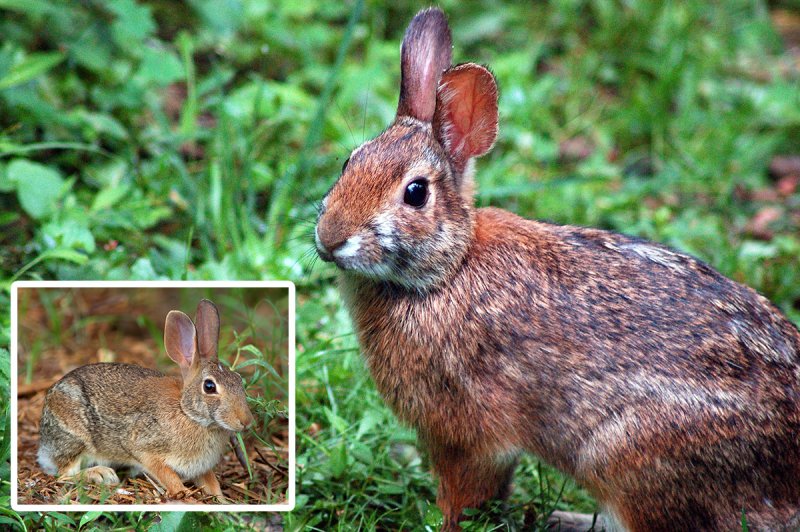Rabbit Research
Rabbit Research: Rare Appalachian cottontail’s survival at risk
Those exploring the higher, cooler elevations (2,500 feet and above) of Western North Carolina may have spotted a sprinting, zig-zagging rabbit known colloquially as a “cottontail.” Chances are, the balds-loving bunny is a smaller, rarely seen rabbit known as the species-specific Appalachian cottontail (Sylvilagus obscurus).
This rabbit has been living in the mountains of WNC for thousands of years, but was only recognized as a separate species in the early ’90s. It’s rare to spot an Appalachian cottontail rabbit in its wild environs. They live in the high elevations and steep topography of the Western North Carolina mountains and are easily confused with their slightly larger, far more frequently-seen cousin, the Eastern cottontail rabbit, which primarily dwell in lower altitudes.
Appalachian cottontails use the thick cover of spruce fir forests for protection from predators. The state has seen a reduction in those trees due to disease and introduced insect pests, according to Andrea Shipley, mamologist for the North Carolina Wildlife Resources Commission (NCWRC).
“There are only patches of their preferred habitat remaining,” she explains. “This forest fragmentation creates isolated populations with low genetic diversity and less resiliency to a disease such as RHDV2.” This highly infectious, fast-spreading, and deadly virus has been affecting wild rabbits in the West and Southwest, and there have been a few cases seen in South Carolina with domestic rabbits, she adds.
In order to gain more insight on the shy Appalachian cottontails, the NCWRC has contracted with research group, Tangled Bank Conservation, to perform a study with a goal of determining impacts to this species that may pose threats to their survival. NCWRC will use this information to develop a management plan to protect them.
Researchers will conduct scat surveys (animal waste) to learn where the species exists in the NC mountains and where it coexists with Eastern cottontails. Eastern cottontails may impact Appalachian cottontails through direct competition, hybridization, and disease transmission.
Appalachian cottontail facts:
- The Appalachian cottontail ranges from central Pennsylvania to the southern Appalachian mountains in northern Alabama.
- It’s classified by the US Fish and Wildlife Service as a species of concern, and classified as vulnerable throughout most of its range. Additionally, it’s listed by the North Carolina Wildlife Resources Commission (NCWRC) as a knowledge gap species—meaning we don’t know much about this elusive rabbit.
- This species inhabits brushy habitat and woodlands in the high mountains. They can be especially abundant in five to 10-year-old clear-cuts, laurel and rhododendron thickets, and around the brushy edges of mountain balds and pastureland.
- The Appalachian cottontail is a medium-sized rabbit with a brownish upper body and white on its underside. It’s slightly smaller than the Eastern cottontail, and usually has a black spot between its ears, which are shorter than its counterpart. Additionally, the Appalachian cottontail does not have a white spot on the forehead, which often is present on Eastern cottontails.
